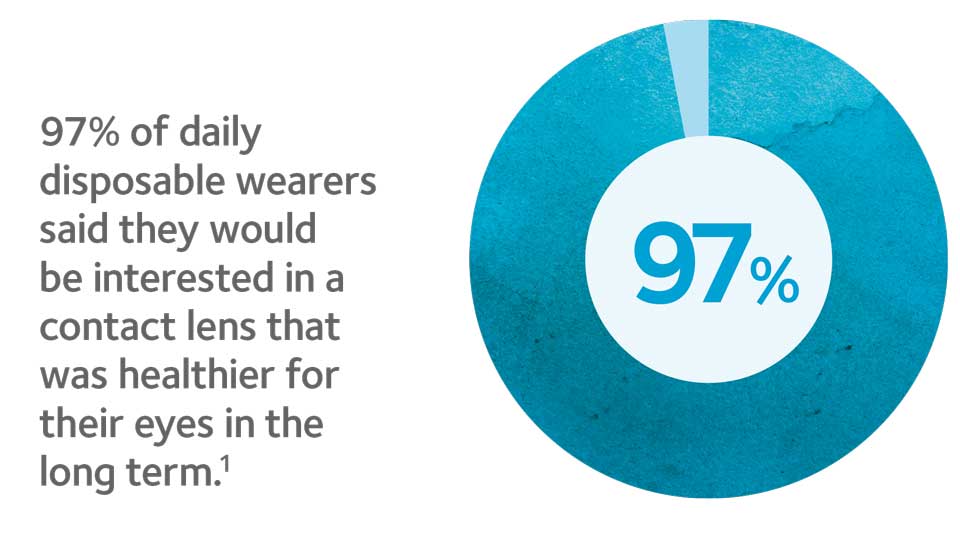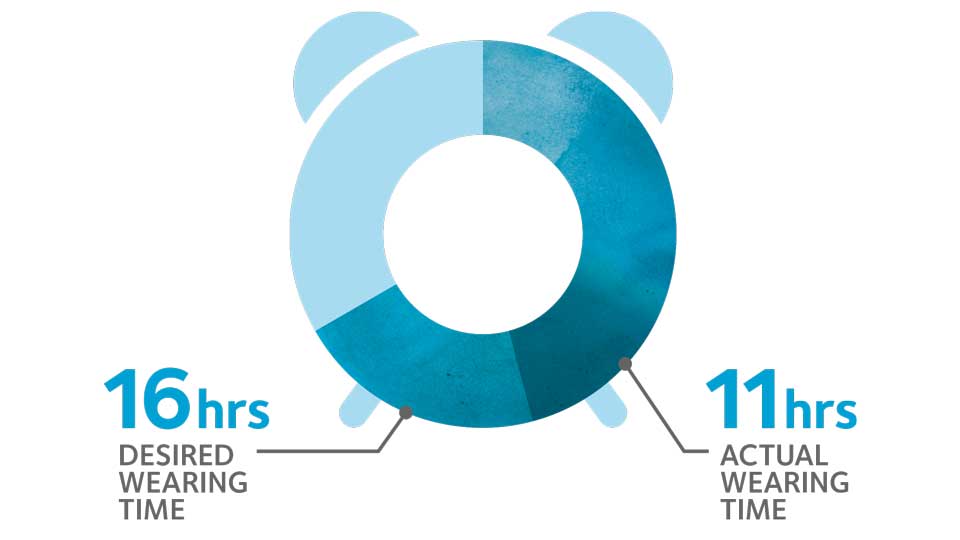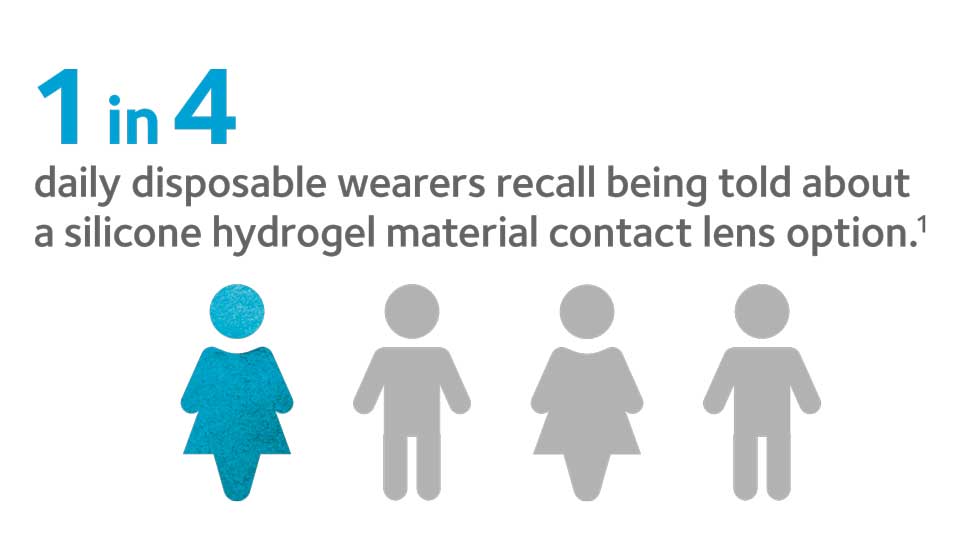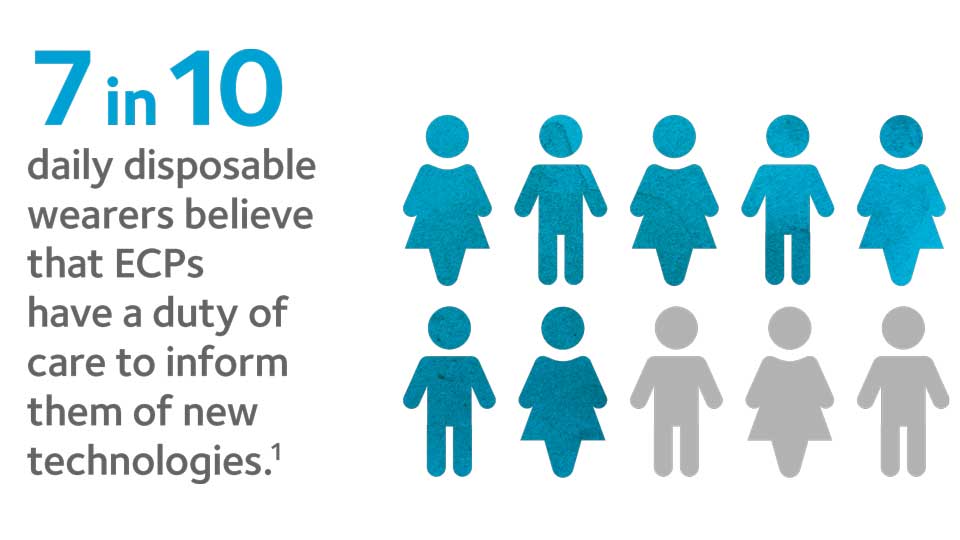- OT
- Industry
- Contact lenses
- Contact lenses: What do wearers want?
Advertorial
Contact lenses: What do wearers want?
This advertorial from CooperVision discusses key findings from a recent survey of 470 contact lens wearers


Advertorial content is paid for and produced by a sponsor, and is reviewed and edited by the OT team before publication.
16 December 2019
What do wearers want from a contact lens? Do they even know they have options?
CooperVision’s latest consumer insight survey of 470 contact lens wearers (279 daily disposable, 191 monthly replacement)1 posed a series of questions to find out what was really important to them as wearers.
Focused primarily on responses from daily disposable contact lens wearers (seen as the source growth in the GB contact lens market),2 the survey unveils their behaviours, needs and attitudes – including how they view their relationship with their eye care practitioner (ECP).
1. A healthy lens
The headline statistics are all related to health. When asked, an overwhelming 97% of daily disposable wearers said they would be interested in a contact lens that was healthier for their eyes in the long term. When this health question was linked to cost, still 87%1 of daily disposable wearers said they would change to a different lens type if it was healthier.1
In addition, 85% of daily disposable wearers would be interested in a contact lens that reduced end-of-day redness.1
UV blocking is a health benefit readily understood by wearers and when asked, 87% of daily disposable wearers said they would be interested in a lens that featured a UV-blocker.1
Wearer needs are aligned to eye care practitioner viewpoints; 88% agree that silicone hydrogel daily disposables are better for the long-term health of their patients’ eyes.3

2. Longer wearing times
Wearing time is important to contact lens wearers. The average wearing time of a daily disposable wearer is 11 hours, compared with an average desired wearing time of 16 hours.1
Added to this, 41% of daily disposable wearers admitted to napping in their lenses. It is therefore not surprising that 88% of these wearers would be interested in a contact lens that could achieve longer wear times.1

The average wearing time of a daily disposable contact lens wearer is 11 hours per day compared to average desired wearing time of 16 hours per day.1
3. The latest technology
As with any consumer product, wearers want to know about the latest technologies and advances in contact lenses. When questioned, 84% of daily disposable wearers said they expect to be told about the latest updates in contact lens technology.1
Asked how and when they would like to receive this information, 24% want to know as soon as the new technology was available, but the majority (60%) are happy to be informed during routine appointments.1
When daily disposable wearers were asked about silicone hydrogel material, a quarter of wearers recall being told about this material as an option for them.1

4. Good patient/ECP relationships
Half of all respondents indicated that they would think less of their ECP if they were not offered a lens that could provide benefits such as longer wearing times and less end of day redness.1
Worryingly, again 50% stated they would even consider going elsewhere next time as a result.1
There is good news too thankfully, as while seven out of ten daily disposable wearers believe up-to-date technology information is part of their eye care practitioner’s duty of care, 62% would then be more likely to recommend their optician to a friend if they were kept informed.1

Conclusion
Valuable insights direct from today’s daily disposable contact lens wearers highlight that they want the benefits of silicone hydrogel and, whether they call it by material name or not, expect to be offered this, together with other ‘latest’ technologies such as UV blocking. In addition, ECPs agree that silicone hydrogel daily disposable lenses are better for the long-term health of their patients’ eyes. Reassuringly, there are a number of silicone hydrogel daily disposable lens portfolios, at different price points,4 with a wide parameter of powers and lens designs.
Recommendations
- Be aware that patients are open and even expect to hear about 1 day silicone hydrogel contact lenses
- Always communicate all the options to the patient in a fitting or aftercare appointment
- On-eye wearing of lenses is the perfect way for patients to experience the product and make an informed decision about what they want to wear.
References
- CooperVision consumer insight study, July 2018. GB adults who wear contact lenses: n=470 (monthly replacement lenses n=191, daily disposable lenses n=279)
- CooperVision data on file. GB contact lens fits. MAT June 2019
- CooperVision Eye Care Practitioner insight study, February 2018. ECP Perception of the Benefits of 1 Day Silicone Hydrogel - Global Report. n=300 of which UK ECPs n=100
- Based on recommended retail prices. Retail price is solely at the discretion of the retailer at all times, the above is not meant to influence the price any retailer charges.

